Bukchon Hanok Village: Where Traditional & Modern Korea Meet
Transport back to another era & lose yourself in a maze of 600 year old Korean folk homes called Hanok (한옥). In the charming neighborhood of Bukchon Hanok Village (북촌 한옥 마을), you will likely feel as if you have stepped foot on another place in history. Here, you can wander uphill streets & winding alleyways, amongst people dressed in traditional Korean hanboks. The name Bukchon in Korean means “northern village” with its location just a few minutes walking distance from the grand palaces of Gyeongbokgung (경복궁) & Changdeokgung (창덕궁).

With the urbanization of South Korea, many hanoks have been converted into businesses to cater to the increasing tourism. As in the central city, you can expect to find traditional tea houses, curated art galleries, fashion boutiques, & cozy guesthouses. Because of the ease of accessibility & its unique backdrops, Bukchon Hanok Village has become a popular attraction in Seoul. In this post, I provide a historical overview as well as important guidelines to keep in mind during your visit. Further down, you will find my personal recommendations for museums & traditional workshops to gain an authentic insight on Korean culture.
Please note: This post contains affiliate links.
This means that, at no extra cost to you, I may receive a small commission if you make a purchase through my affiliate link.
You may read my full disclosure policy here.

Skip to the Korean cultural activities & attractions:
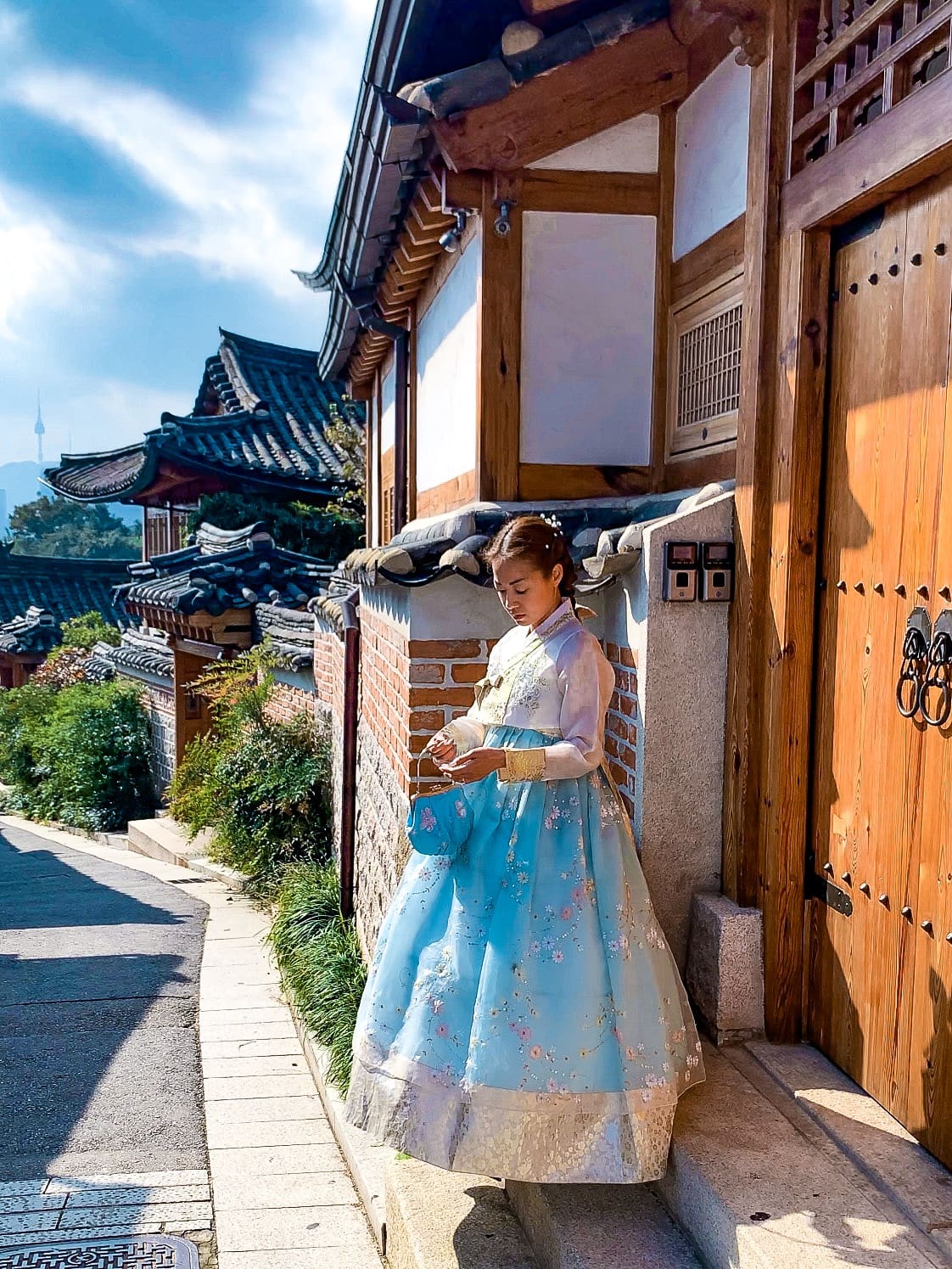

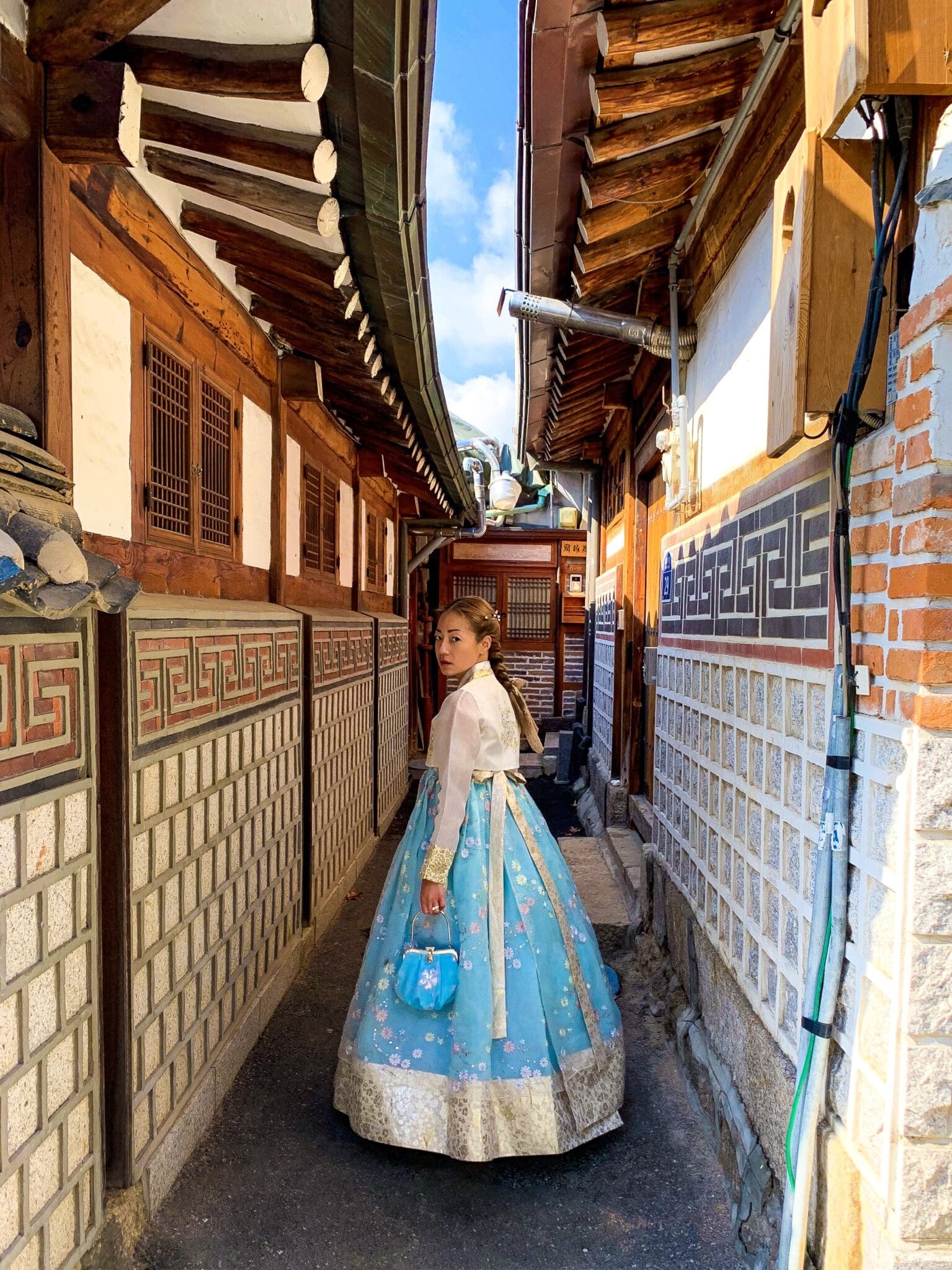
History of Bukchon Hanok Village
First developed during the great Joseon Dynasty, the Bukchon Hanok Village was the main residential quarters for aristocrats & high-ranking government officials. Its convenient location between the palaces allowed the royalty to summon them anytime during early morning or late hours. However, after much devastation from the war, the Japanese invaders broke up the remaining hanoks into smaller sections. With Bukchon’s scarce landscapes & growing population, commoners took over the cramped villages, while the wealthier citizens moved higher upland. Today, there are five distinct neighborhoods:
- Wonseo-dong (원서동)
- Jae-dong (재동)
- Gye-dong (계동)
- Gahoe-dong (가회동)
- Insa-dong (인사동)
For several years thereafter, locals led protests to protect the village from the rapid modernization. In 2001, the city government published the “Bukchon Plan,” to protect & preserve the remaining original hanoks. It cost an estimated 84.5 billion KRW ($71 million) to revive the rest of the 900 hanoks that stand today. In 2009, this extensive restoration project was recognized with the prestigious UNESCO Asia Pacific Heritage Award for its conservation efforts.
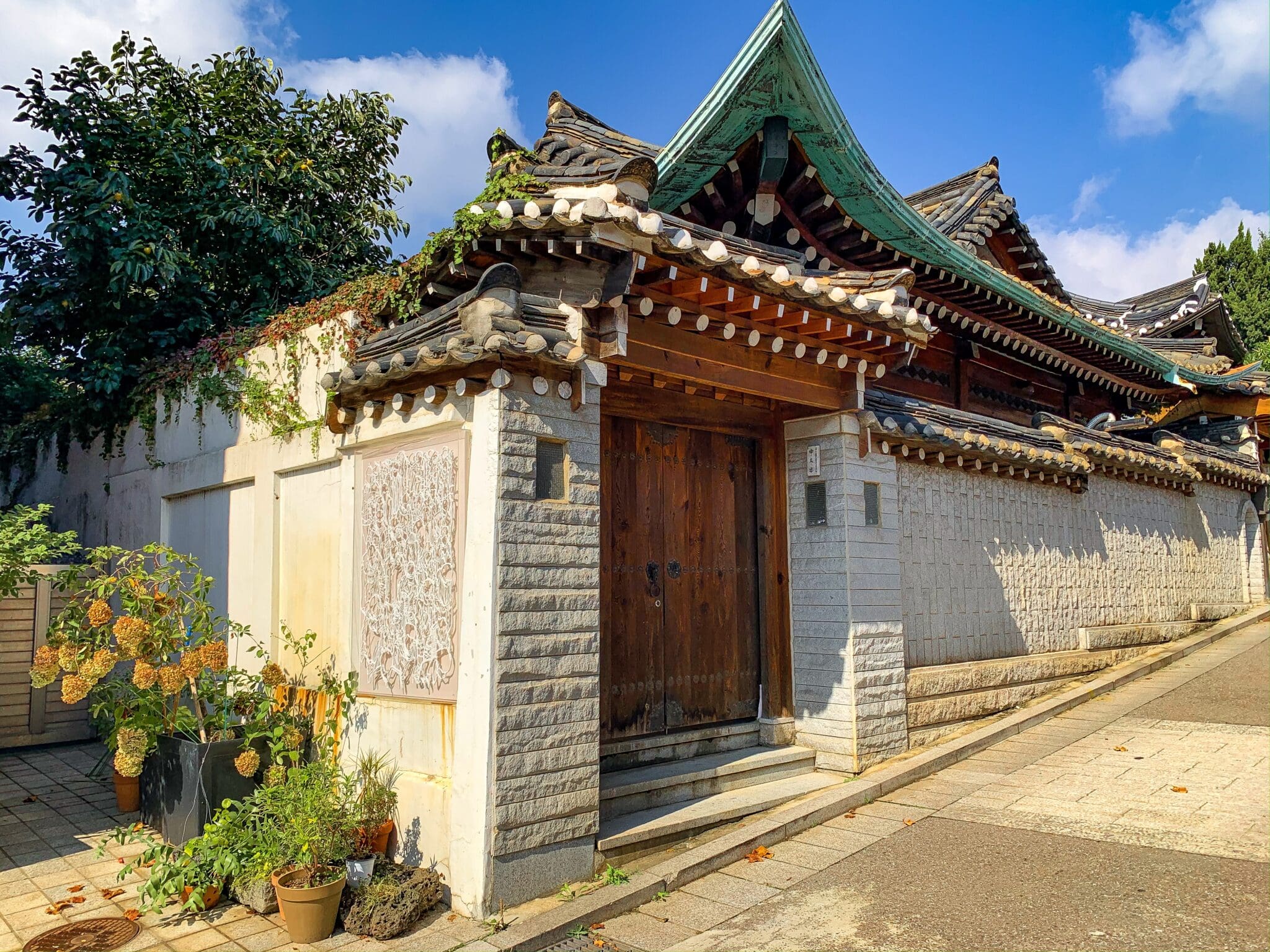
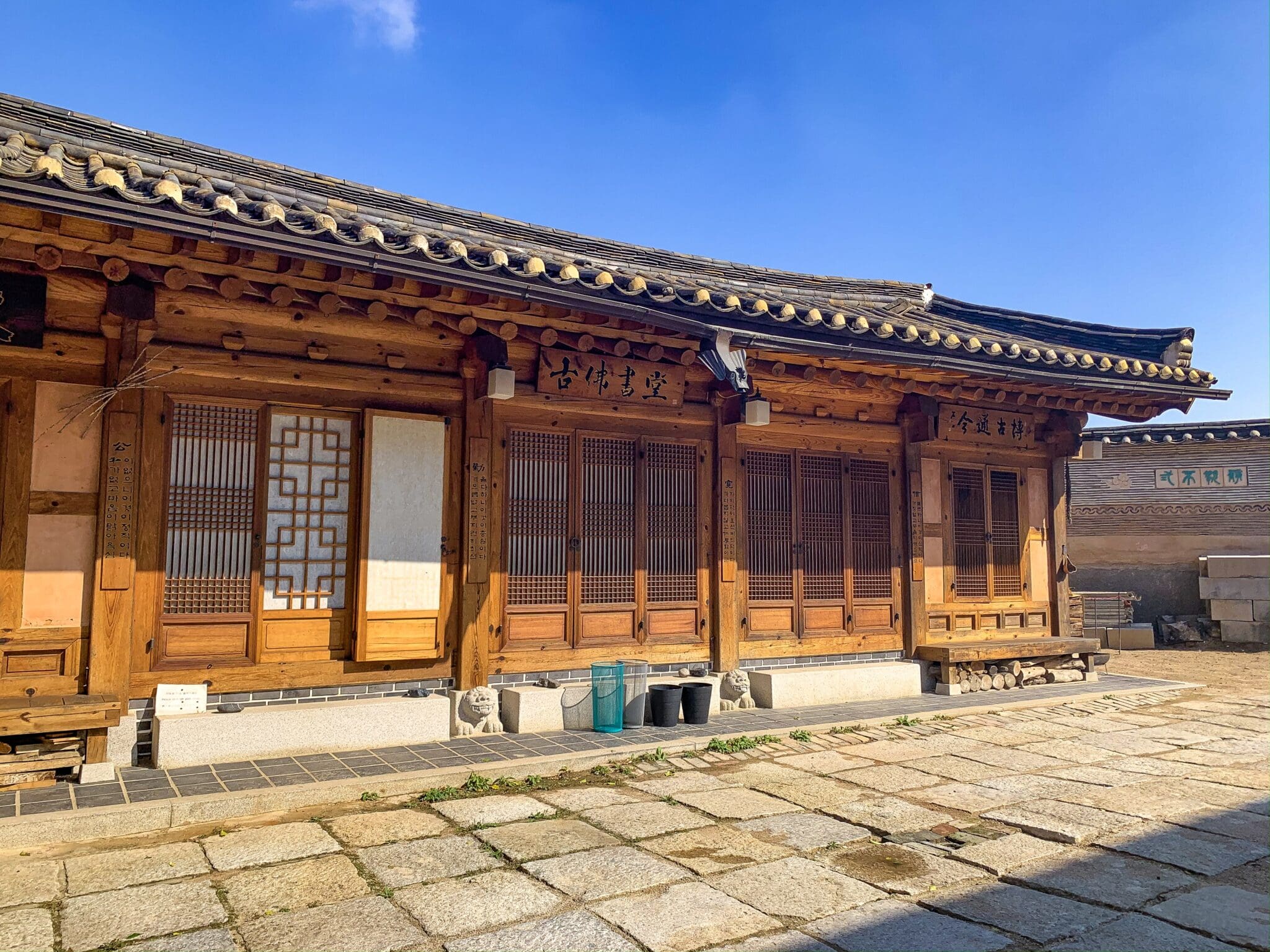
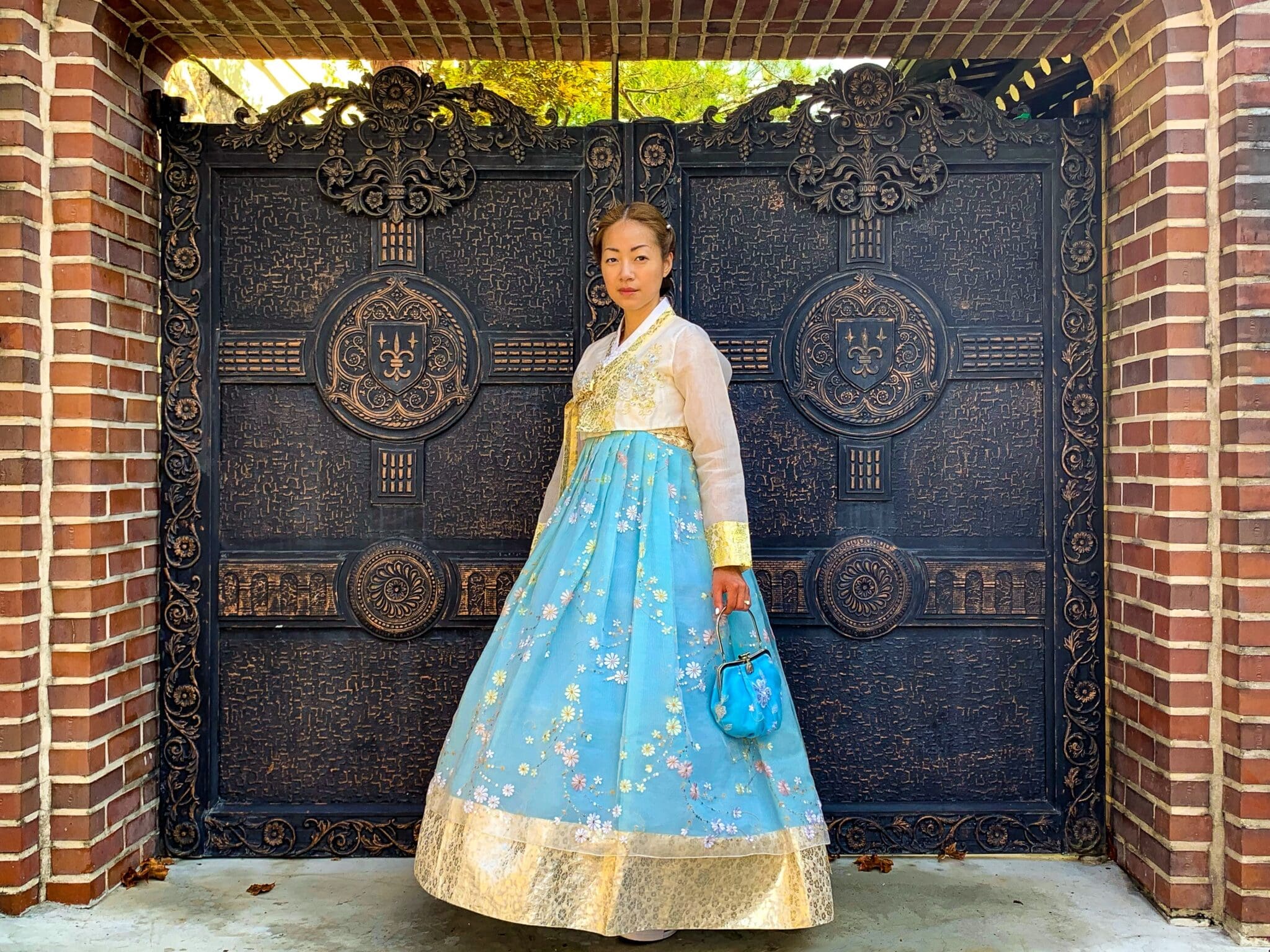
What makes hanoks truly unique is the usage of natural, earth-tone materials for its construction, such as Korean red pine wood, clay, & stone. A strong translucent paper, hanji (한지), made from the mulberry tree covers the windows & door ways to allow sunlight inside. What’s more, the rooftops are characterized by deep eaves & pointy corners that create shade in the summer. Hanoks also feature maru (마루), or raised wooden flooring that allows air circulation to keep the rooms cool. Some of the more upscale hanoks have primitive underground heating called ondol (온돌), that generates warmth during Korea’s cold winters.

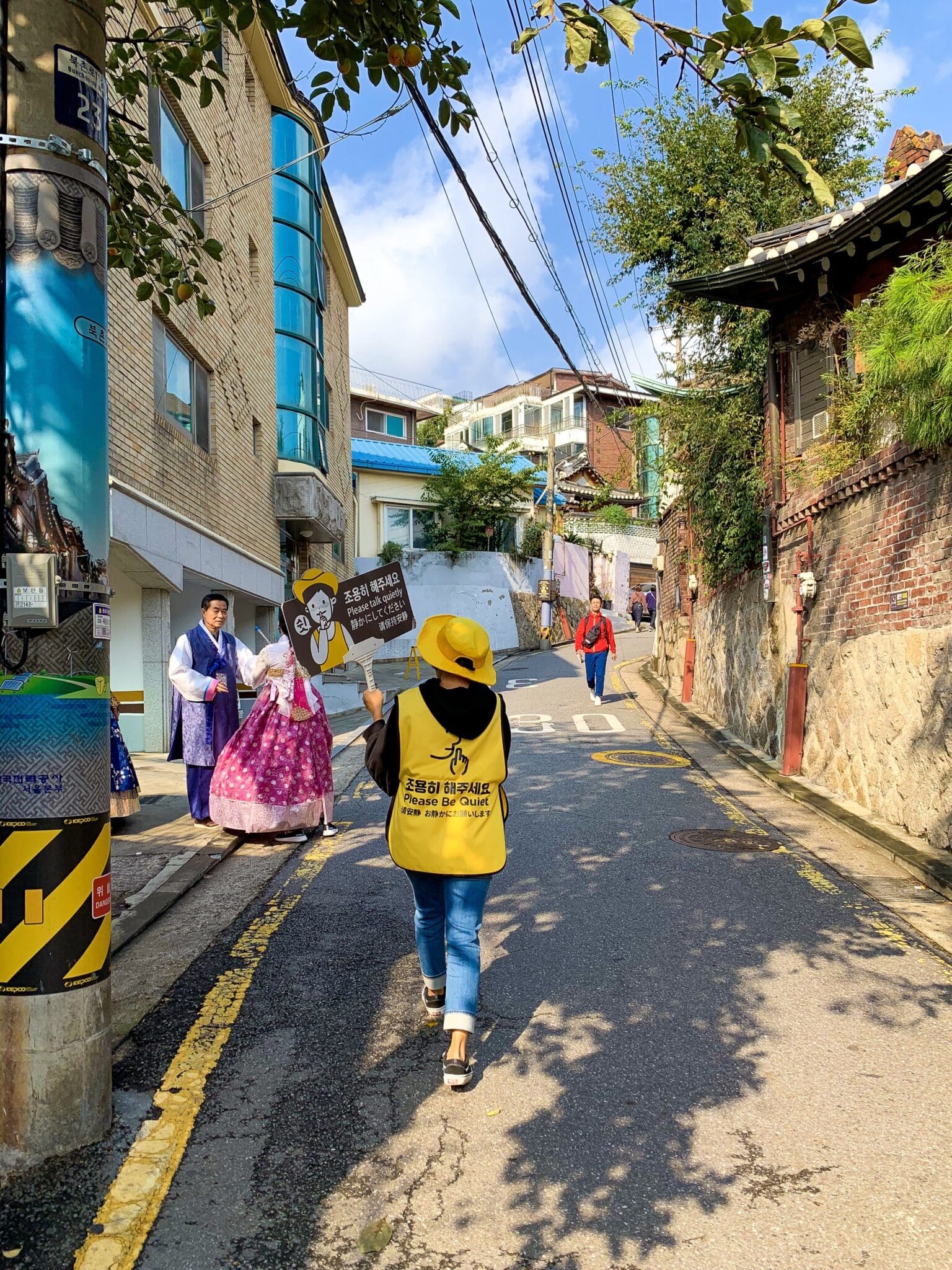
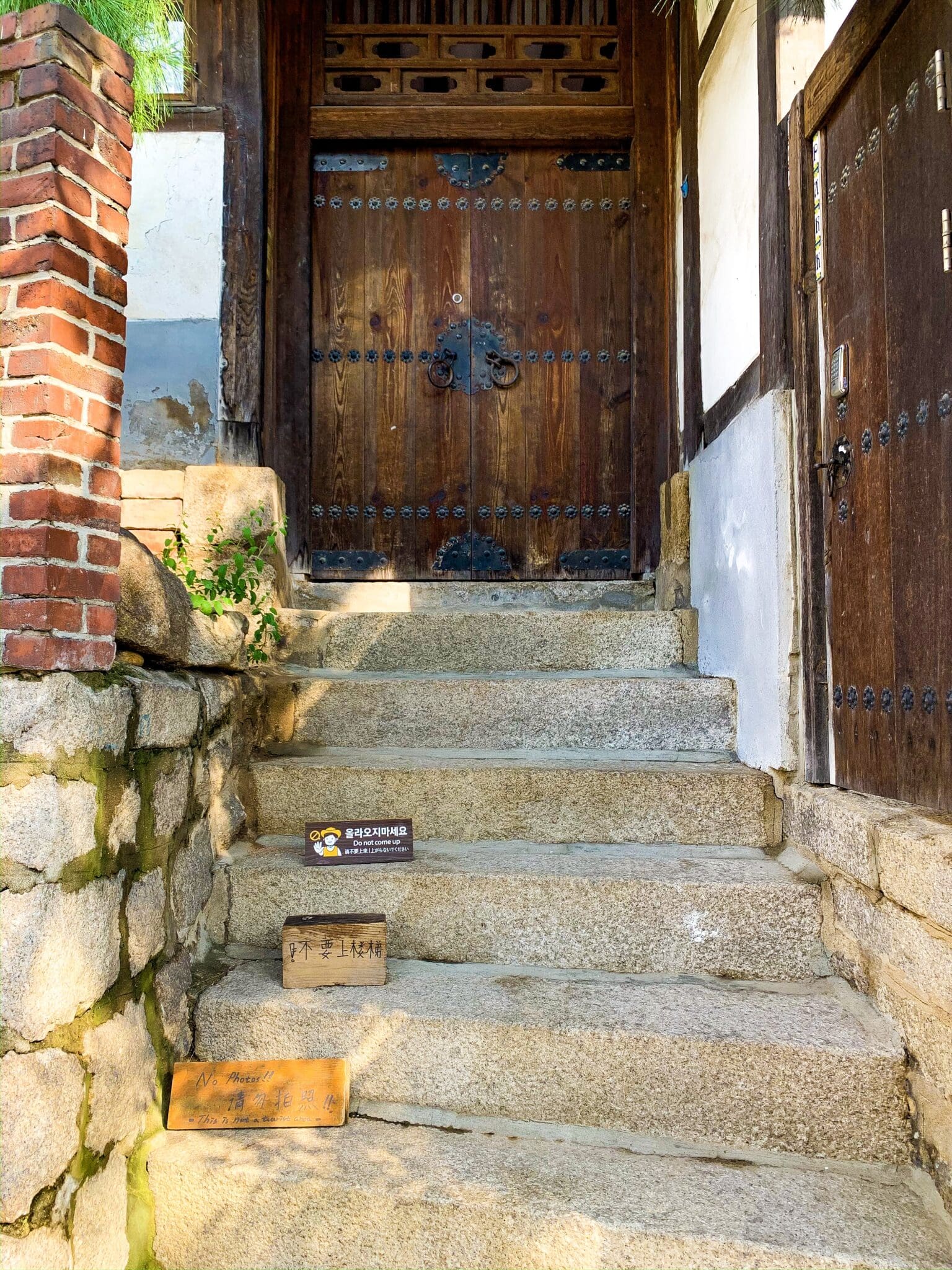
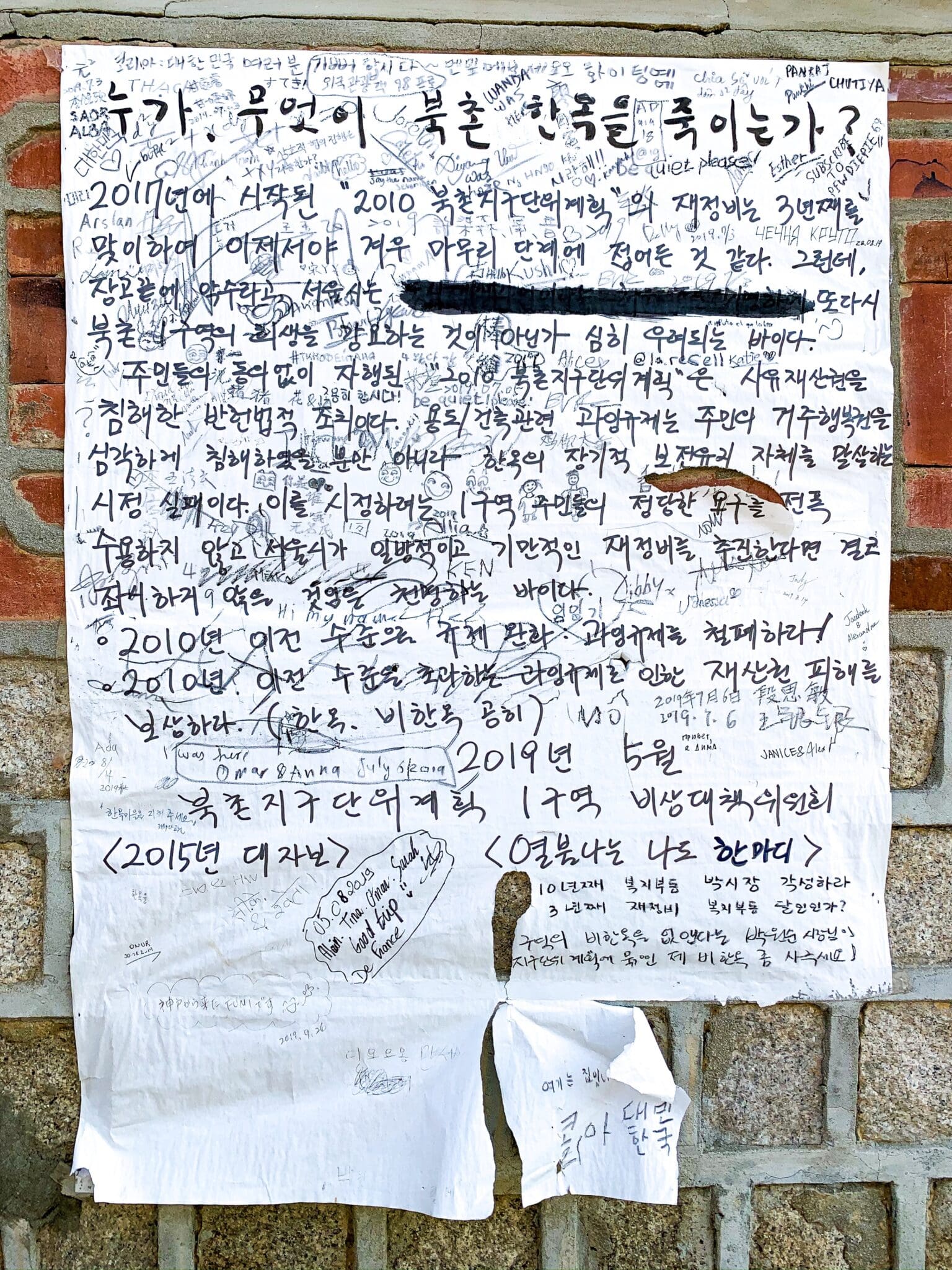
Respect the Residents of Bukchon Hanok Village
The Bukchon Hanok Village is the only traditional neighborhood in Seoul where people still reside. With an estimated 10,000 visitors a day, it is no wonder locals have started to protest. Every day, residents deal with excessive noise, invasion of privacy, littering, & even urination in alleyways due to the lack of public restrooms! To help control the overflow of tourists, the government has recently placed strict visitor hours from 10:00am to 5:00pm & closes the entrance gates every Sunday.
During your visit, please be respectful of the residents & mindful of all the explicit signs. Explore in quiet, hushed voices & do not solicit in front of nor peer inside people’s homes. Place your phone on silent mode when taking photos. Also note, smoking is prohibited in all areas within the village.
If you find yourself walking around in constant circles, don’t worry, as it is inevitable. Because of the recent popularity, the Korean tourism board has appointed several ambassadors all across the village to assist visitors. I highly advise checking out the Seoul Metropolitan Government website for more guidelines before your visit.

Angella’s Recommendation: Cha Masineun Tteul (차 마시는 뜰) aka Cha-teul
Monday to Friday: 10:00am – 9:00pm
Saturday & Sunday: 10:00am – 9:30pm
Perched on a hill within Bukchon Hanok Village, you will come across Cha Masineun Tteul, or Cha-teul for short. Its name translates to “garden for drinking tea” & that is exactly what you will find as you walk in. Even after my memorable O’sulloc green tea experience on Jeju Island, I was ready for more tea goodness!
Preserving the ancient tea traditions, you will asked to remove your shoes before entering Cha-teul teahouse. The lovely verdant garden in the center courtyard brings a sense of tranquility as water softly trickles down fountains. Classical music plays in the background & a calming aura overcomes you as soon as you sit on a floor mat. If you get seated on the outskirts of the teahouse, you will presented with grand views of Gwanghwamun & the surrounding mountains.
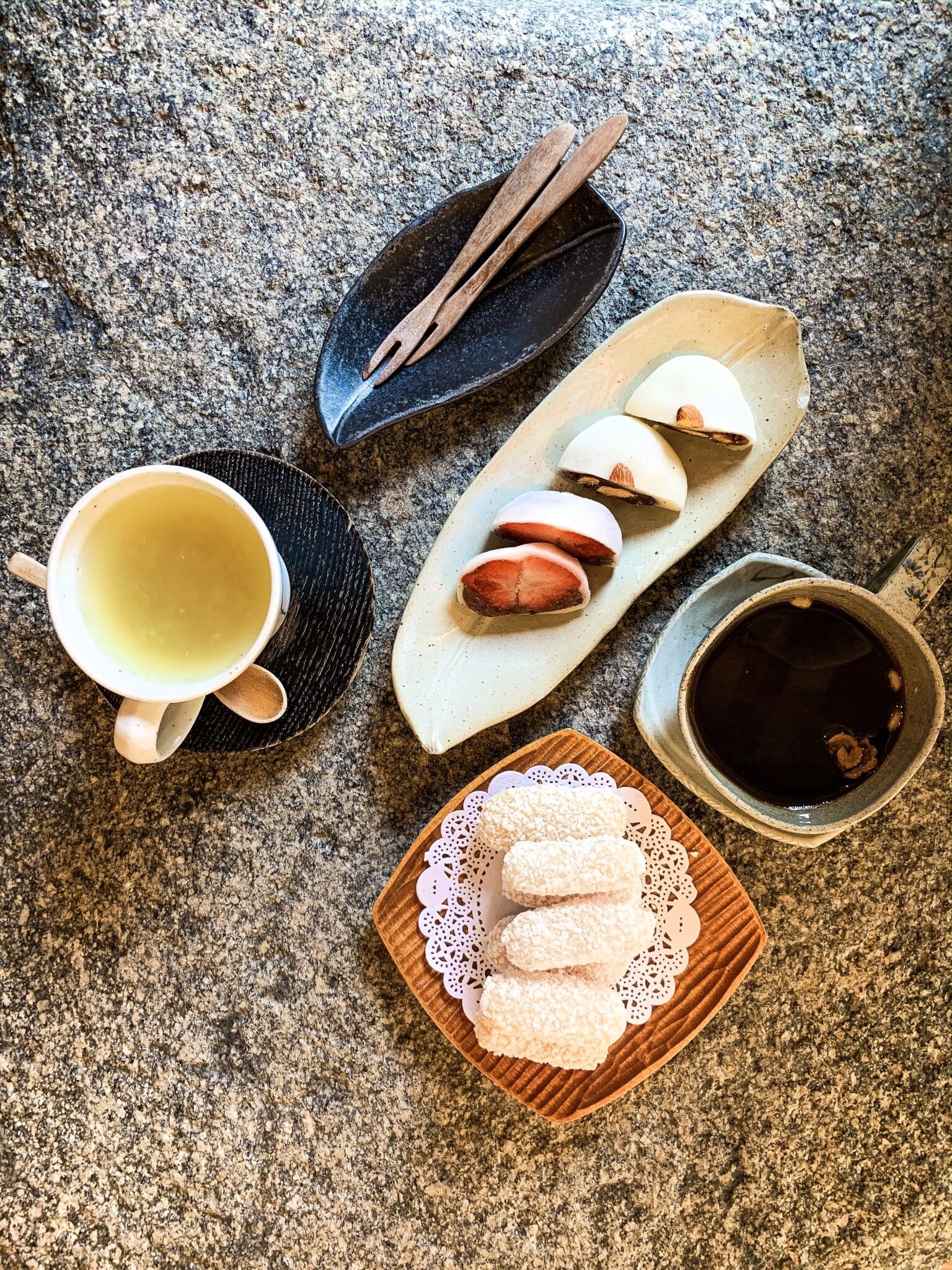

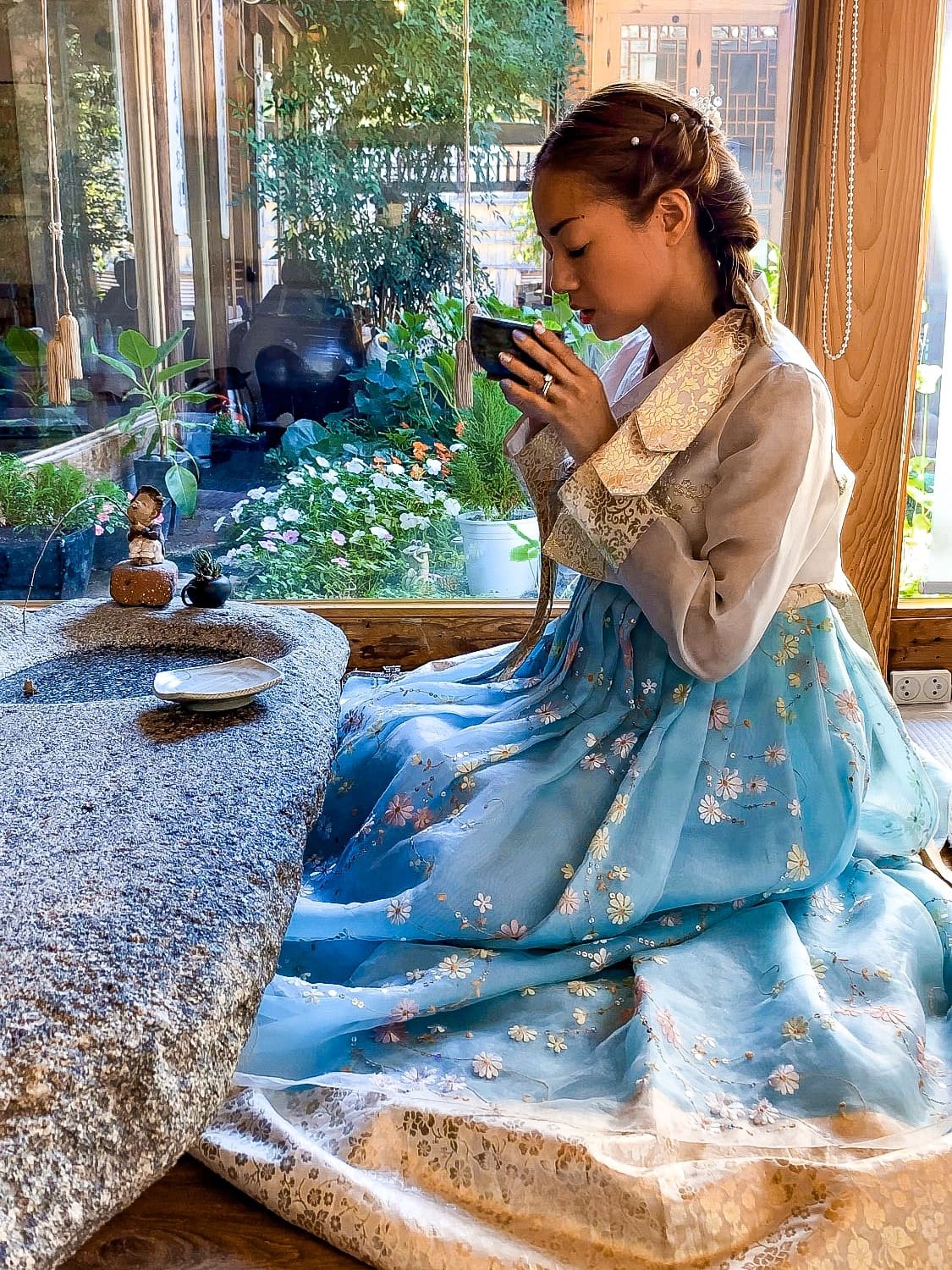
Special tea concoctions with healing powers.
Cha-teul is a unique teahouse in that majority of its drinks are not loose leaf brews such as green tea. During the Joseon Dynasty (1392-1897), much of its prevalence diminished along with the suppression of the state religion of Buddhism. Thus, came the development of fruit infused beverages that also incorporate medicinal roots & plants for its healing properties. With Korea’s thriving food & beverage scene, artisans are continuously developing new concoctions with a focus on health & wellness.
The menu at Cha-teul serves up a variety of teas, each with a description of its health benefits. Feeling the need to calm my stomach & aid in digestion, I ordered the daechu-cha (대추 차) made of jujube, a type of Korean date. The deep maroon colored tonic is abundant in iron & potassium, helping to warm up one’s body. It tasted very earthy, which as a serious tea drinker, I rather enjoyed.
My husband opted for the tangy yuza citron tea (유자 차) for its vitamin C in hopes of boosting his immunity that has been lagging during our trip. Both teas were pleasantly aromatic & not too sweet to taste. Our tea & snacks looked like art, beautifully presented on traditional Korean plates & cups.
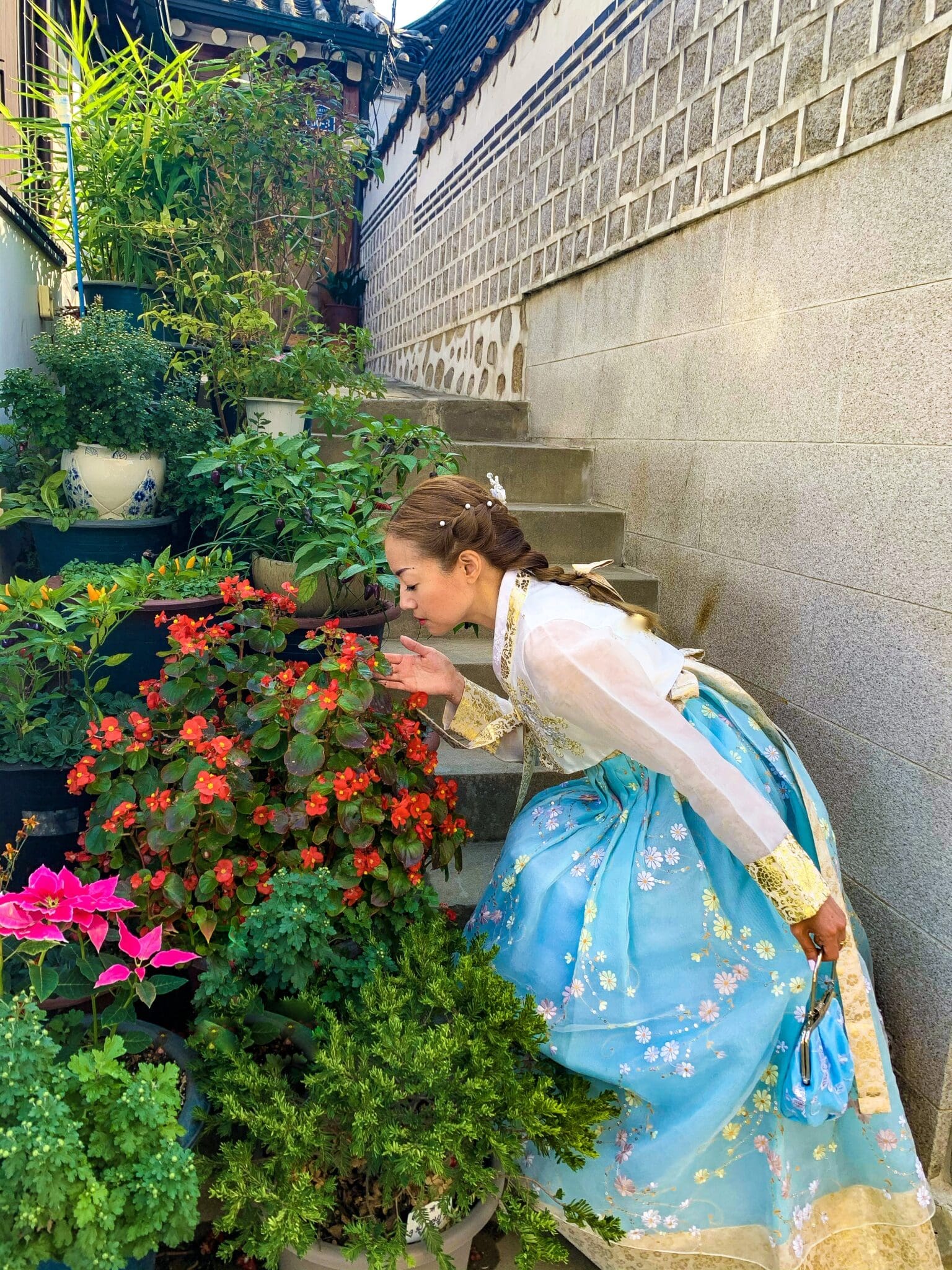
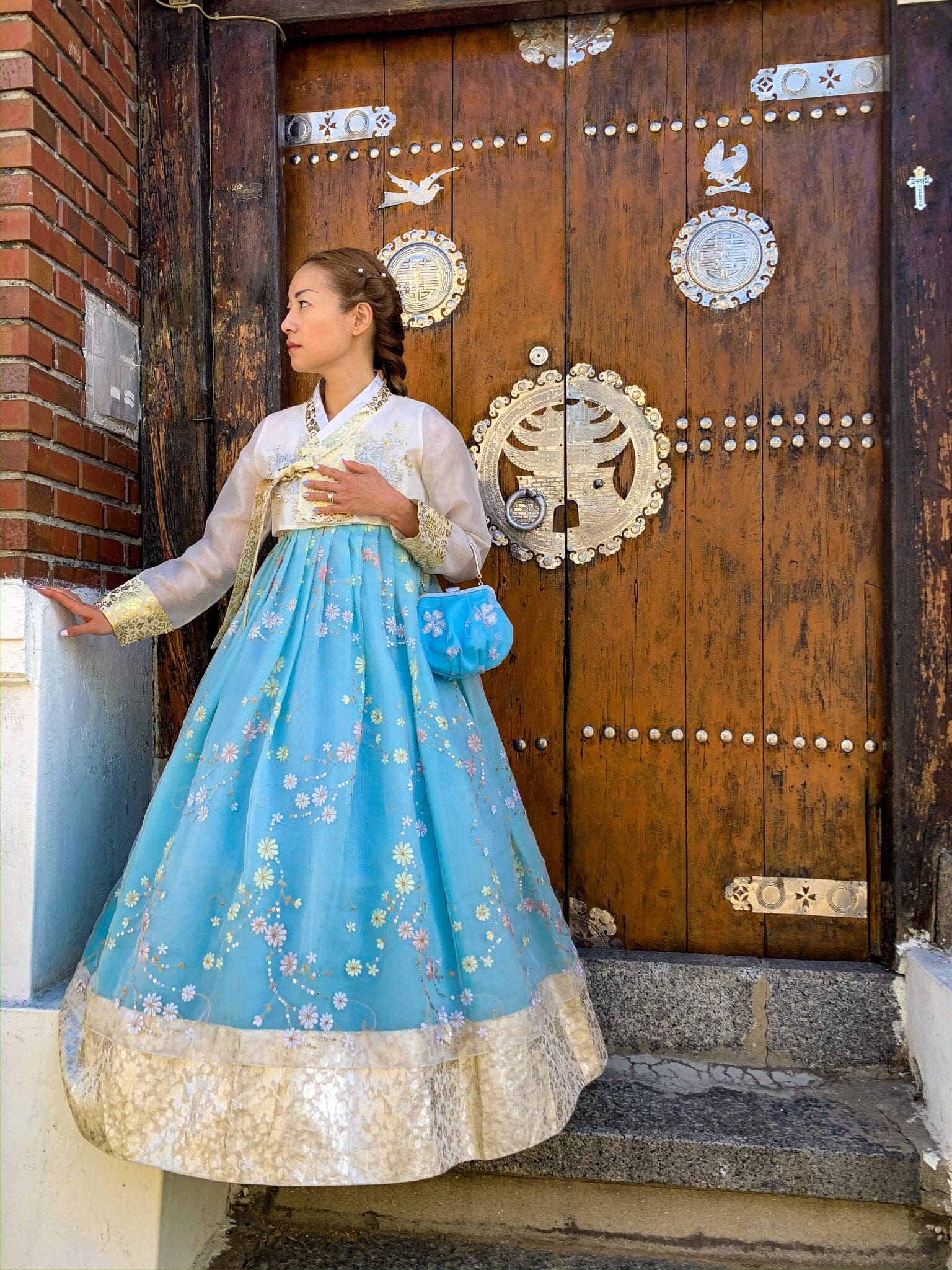
“Culture makes people understand each other better. And if they understand each other better in their soul, it is easier to overcome the economic & political barriers. But first they have to understand that their neighbour is, in the end, just like them, with the same problems, the same questions.”
Paulo Coelho
Experience the Rich Arts & Crafts Scene at Bukchon Hanok Village
Because my husband & I already partook in cultural competency at the National Folk Museum of Korea, we bypassed anything education related in Bukchon. That is not to say the village attractions are not worthwhile. The Korean folk culture & hanok lifestyle here still remains visibly strong. Luckily, there are several traditional classes & workshops to choose from.
The following activities are just a few of my recommendations to fulfill your time spent at Bukchon Hanok Village. To save you the headaches of time & cost, you can make reservations through Trazy.com, a highly reputable booking portal for travelers to South Korea.

Bukchon Traditional Culture Center (북촌 문화 센터).
Monday to Friday: 9:00am – 6:00pm
Saturday & Sunday: 10:00am – 5:00pm
Phone number: +82 2 2133 1371
First-time visitors looking for an introduction to the hanok lifestyle should visit the Bukchon Traditional Culture Center. This free attraction provides information on the history, values, & social customs of hanok living. What was once home to the Min family, who were in charge of finances during the Joseon Dynasty, is now an open hanok. Its renovation now allows visitors to observe the architecture & structure of its interior. Don’t forget to pick up a free Bukchon Hanok Village walking guide map before you leave!

Korean Calligraphy Class.
Near the Bukchon Traditional Culture Center is a special place where visitors can attend a KOREAN CALLIGRAPHY CLASS. Backed by 30 years of experience, calligraphy artist Oh Jeong-mi will teach you how to write your name in Korean Hangul using traditional calligraphy techniques on real hanji paper. Originating from the ancient Joseon Dynasty, munja-do (문자도) is a style of Korean folk letter painting that uses Chinese characters & symbols in an expressive manner. In ancient times, one could determine a painter’s feelings through the depth & intensity of the ink on the painting.
Gahoe Museum (가회 민화박물관).
Closed on Mondays
December – February: 10:00am – 5:00pm
March – November: 10:00am – 6:00pm
Phone number: +82 2 741 0466
For those who wish to learn more about the history of Korean folk art should visit the Gahoe Museum. For only 3,000 KRW ($2.50), one can gain much insight on Korean indigenous beliefs & culture. Though small in size, its illustrious exhibits hold over 2,000 artifacts including shamanistic paintings, classical books, & religious amulets. As you observe each piece, a curator will explain the color & symbolism. Even people who don’t know how to appreciate art may become inspired by the skills of the Korean ancestors. After gaining inspiration from the museum, visitors can attend the Gahoe Folk Painting Workshop to get creative with traditional bags, wooden panels, & cards.
Mother-of-Pearl Craft Class.
Just a block south from the Gahoe Museum is Jinjoo Shell (진주 쉘), a beautiful mother-of-pearl gallery that has been in business for over three generations. Mother-of-pearl is the shiny, iridescent coating on seashells that is often used to embellish traditional Korean furniture & fashion accessories. At Jinjoo Shell, artisan Lee Yeong-ok leads the MOTHER-OF-PEARL CRAFT CLASS in which you can learn about the art’s history & create your own memorable keepsake! Prices depend on the type of accessory you choose to design: hand mirror, business card case, hairband, bracelet, or brooch.

Donglim Knot Workshop.
On the opposite block, north of Gahoe Museum is the Donglim Knot Museum (동림 매듭 공방) which offers a unique DIY experience at its TRADITIONAL KNOT ORNAMENT WORKSHOP. While tying knots may not seem like a recognized form of art, the creations are quite elaborate in Korea. These colorful threads are used in decorating traditional attire as well as home decor. In her class, knot master Shim Young-mi will teach you knotting techniques to make a bracelet, necklace, or even an ornamental tassel for your cell phone.
Traditional Tea Ceremony Class.
For tea connoisseurs who would love to learn more about Korean tea culture, or darye (다례), can attend a TRADITIONAL TEA CEREMONY CLASS with Professor Seo Eun-ju. Having sustained tea rituals over four generations of her family, Seo has a wealth of knowledge ready to share with her students.
During your experience you will dress in a ceremonial Korean robe & learn the mannerisms for the ceremony. Professor Seo will teach you how to prepare tea as well as whisking ceremonial green tea matcha. Additionally, you will also have the opportunity to create dasik (다식), a type of Korean cookie made with healthy ingredients & herbs. When performing the tea ceremony, Seo will emphasize the importance of relaxing one’s mind & repeating positive affirmations, “I am precious. I am valuable. I am treating myself today.” As if the ceremony was not zen enough, you will close your session with a green tea hand & foot massage!

Han Sang Soo Embroidery Museum (한상수 자수 박물관).
Thursday to Sunday: 10:00am – 5:00pm
Phone number: +82 2 744 1545
Renowned embroidery artist, Han Sang-soo founded the Embroidery Museum to educate the public about the meticulous traditional Korean art. There are two exhibition halls that display ancient relics & folk crafts as well as an audio-visual education center. You will find a diverse range of embroidered art from exquisite royal court garments to delicate folding screens. The different designs reflect the wearer’s status, with extravagant golden tigers & dragons symbolizing power. For those interested in hands-on activities, can take part in handkerchief embroidery or fabric patch-working traditional workshops.

Traditional Gold Leaf Imprinting Workshop.
Another popular activity involves getting creative with kum bak yeon (금박연), or gilding gold patterns on silk fabric at the TRADITIONAL GOLD LEAF IMPRINTING WORKSHOP. This class is led by master Kim Deok-hwan, at the Kum Bak Yeon studio next to the Han Sang Soo Embroidery Museum. In Korean culture, gold has been a symbol of beauty & authority. Using a woodblock technique, you can create your own intricate design on a bookmark & greeting card.
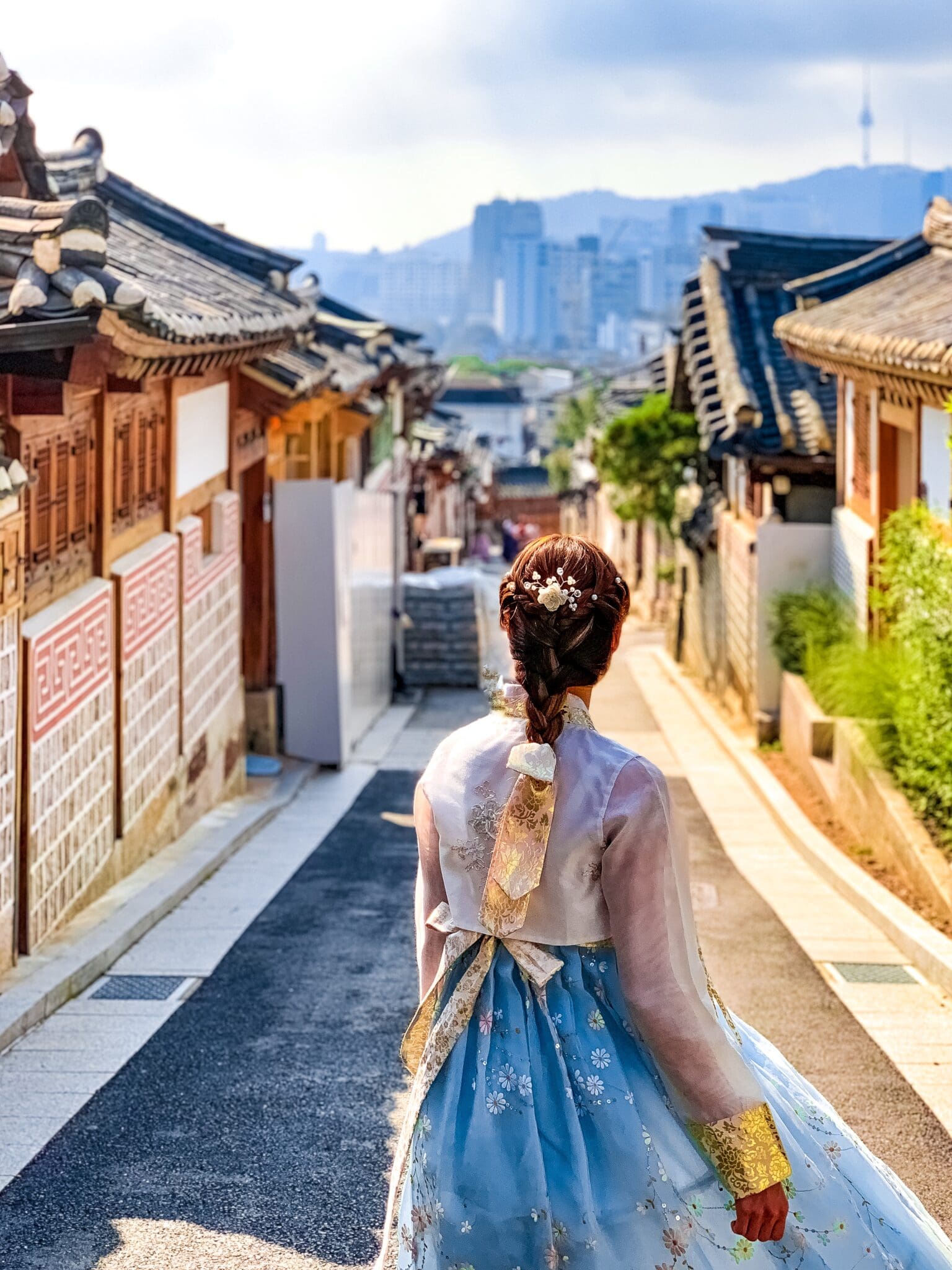
The 8 Scenic Views of Bukchon Hanok Village
Even the most seasoned navigator with a guide map in hand can easily lose their sense of direction in the maze-like Bukchon Hanok Village. Take the designated route that follows along the top 8 scenic views to capture the best pictures.
- Changdeokgung View (창덕궁)
- Wonseo-dong Gongbang-gil (원서동 공방길)
- 11 Gahoe-dong Area (가회동 11번지)
- 31 Gahoe-dong Hillside
- Gahoe-dong Alley (downhill view)
- Gahoe-dong Alley (uphill view)
- 31 Gahoe-dong
- Samcheong-dong Stone Steps
Common Korean Words & Phrases to Use at Bukchon Hanok Village
Click the image to enlarge or pin it for later!




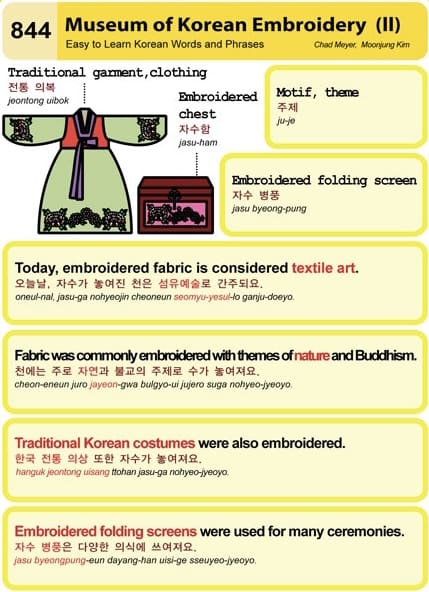
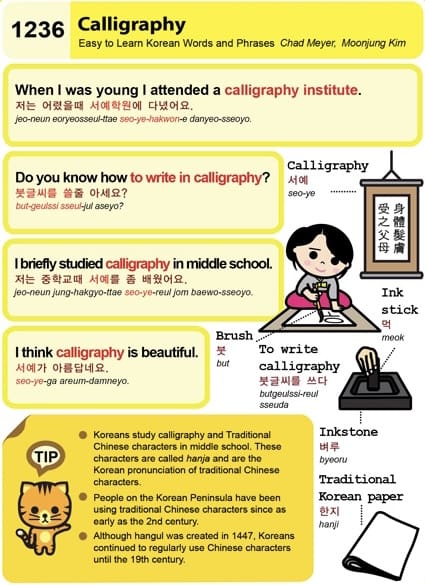
Angella’s Travel Tips
- While the Bukchon Hanok Village requires no admission fee to explore, it is a residential area that should still be respected. Regardless of the visiting hours, please be cognizant of noise levels & do not loiter in front of people’s homes.
- There are a lot of steep roads & uneven pavement which may be difficult for some travelers. Those utilizing wheelchairs or strollers will definitely get a workout so wear proper, sturdy footwear.
- As with other areas in Seoul, there are no street garbage bins. Be sure to bring along a plastic bag to store your trash & keep the neighborhoods clean.
- Bukchon Hanok Village does not have any public restrooms available. Therefore, don’t forget to use the facilities before your visit & at any chance you get after visiting restaurants or museums.
- To read more about Korean history & culture, check out my post Top Books About South Korea.


Farrah
January 7, 2020 at 9:59 amOoo, this place is definitely on my travel bucket list! There are so many things to check out, and that hanbok is absolutely beautiful! :] (I may be partially biased because it’s all my favorite colors, hehehe..)
The Solivagant Soul
December 20, 2019 at 10:40 pmI have been seeing pictures about this place for years, and I somehow thought that this was all Seoul! Lovely to know about the best things to do in this neighborhood. How so you decided to wear the traditional dress?
Angella
December 26, 2019 at 11:55 amThere is so much to do in Seoul & what I especially loved about Bukchon Hanok Village was how seamlessly they preserved the old traditions & architecture of the buildings in the heart of a bustling city. It is the perfect area to learn more about Korean culture. Renting a traditional hanbok is a popular activity in Korea, even amongst the locals. Definitely recommend you explore Seoul in one!
Ann
December 20, 2019 at 2:58 pmGreat guide thank you! I really must visit Korea soon.